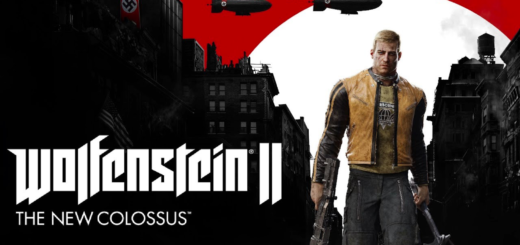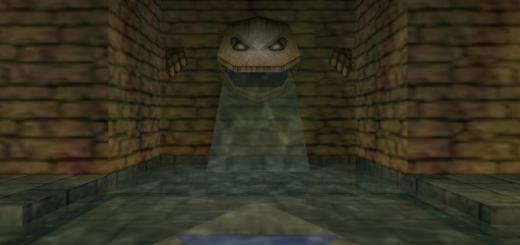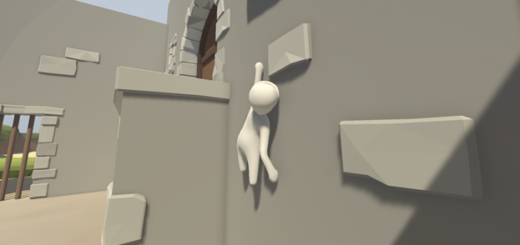Replay 1998: HALF-LIFE
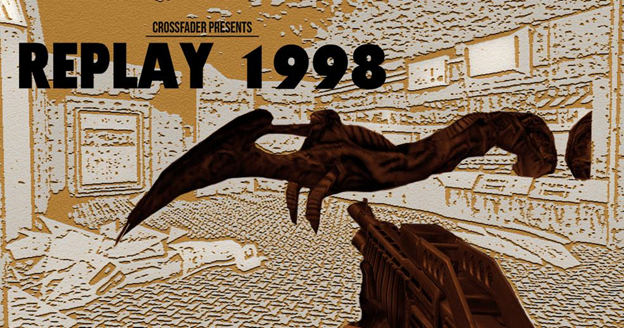
One of my favorite activities as a wee lad was to browse the hallowed halls of electronics store CompUSA (R.I.P.) after school. There were console stalls with playable demos, racks of free promo discs, and aisles upon aisles of video games to salivate over. It was a rare day that I walked away with any of these titles, but that didn’t stop me from poring over them like some kind of covetous gremlin.
Many games came and went, and the layout of the shelves changed appropriately. A select few games, however, remained in stock throughout the store’s lifespan, occupying the same spot on aisle #2 without fail. They weren’t collecting dust; rather, people never stopped buying them, even as ever flashier competitors rolled onto shelves. Their bright, bold boxes were the apple of my eye, constantly teasing me to be added to my collection.
I speak, of course, of Valve’s iconic HALF-LIFE, its expansions OPPOSING FORCE and BLUE SHIFT, and their seminal multiplayer mutation, COUNTER-STRIKE. I never had the pleasure of picking them off of CompUSA’s shelves while the store was still in business-prominent “M” ratings on each and responsible parenting made sure of that-but when I finally did get my hands on them, it became obvious why these classics never went out of style.
HALF-LIFE follows the exploits of Dr. Gordon Freeman, a scientist fighting for his life after a secret government experiment goes awry. In a catastrophic series of events, Black Mesa Research Facility is overrun by bloodthirsty monsters from another dimension, everything from the sprinklers to the security systems go haywire, and the military response is ordered to silence witnesses instead of saving them. All in all, a very bad day for everyone, but nothing Gordon isn’t equipped to handle. The powers-that-be have blessed the good doctor with an MIT education, a prototype suit of power armor, and most importantly, a trusty steel crowbar.
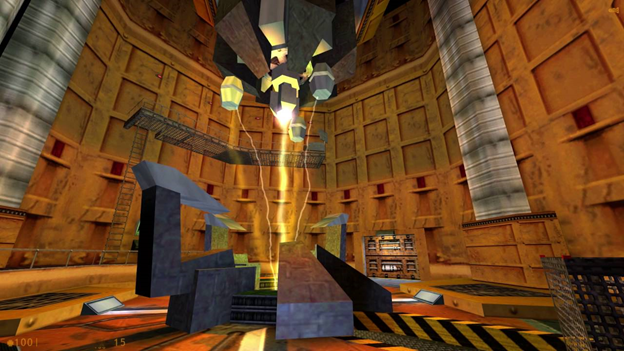
The Anti-Mass Spectrometer, AKA The “What Could Go Wrong?” Machine.
HALF-LIFE wasn’t the only megahit set in a secret underground lab released in 1998, but that didn’t stop it from forever changing the gaming landscape. Similarly, prototype weapons and alien portals weren’t the only innovations to come out of Black Mesa. So many things we take for granted in modern games, from basic mechanics to stylistic techniques, saw their inception within Valve’s debut title. Before HALF-LIFE, most shooters worked with three basic elements: guns, things to shoot with guns, and a finish line to work towards. This endless gauntlet of shooting galleries popularized by the likes of DOOM and QUAKE got the job done, and stale or not, most FPS developers were content to stick to the script for a decade.
When players first booted up HALF-LIFE, that mindset was immediately thrown out the window. The first 10 minutes of the game are spent entirely on your commute to work; you could watch passively out the window of your train as robots mopped up toxic spills, chat with security guards as they verify your ID, and even pull pranks on your coworkers. The very thought that a player could go half an hour without picking up a gun was unheard of for such an action-packed genre, but HALF-LIFE realized the importance of smart pacing. Throughout the game, the player would take breaks from firefights via puzzles, from braving booby-trapped warehouses to deactivating malfunctioning lab equipment. Not only did these segments offer valuable breathers, they proved that the FPS could accomplish more than simply mousing over enemies and clicking until they went away.
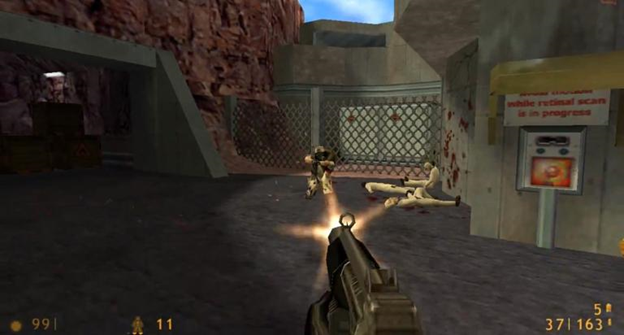
Although some things never get old
Taking a break from the action also did wonders for immersion — not all problems can be solved with bullets, after all. HALF-LIFE was the first to realize that a game could prioritize form and function, and that one can often enhance the other. There were still FPS standards like ammo and health pickups, sure, but they weren’t conveniently lined out in neat little rows like the missile crates in DOOM. Guns were responsibly locked away in security guard posts, first aid cupboards would crop up around potentially dangerous machinery, and so on. This intentional placing of supplies created a more authentic atmosphere, but it also allowed the game to take a page from popular survival-horror titles: by rationing supplies, HALF-LIFE ensured the player always felt like they needed something more. And yes, even though Gordon could zip around with superhuman speed, the developers still saw fit to make the facility wheelchair accessible.
It wasn’t just the level design where HALF-LIFE broke new ground. Gordon’s aforementioned coworkers? Previously, nobody thought to incorporate NPCs for any other reason than to give you something to kill (outside of escort missions, which were thankfully absent from this game). In HALF-LIFE, you meet hundreds of Black Mesa employees, a select few of which present you with items, but who mostly exist for set dressing, passing along directions, or even just to be eaten in order to demonstrate the ferocious capabilities of the next Big Bad.
Black Mesa felt like a living, breathing world, and this was largely in thanks to AI that was designed primarily around feeling authentic, not difficult. Civilians would cower in fear when presented with danger, hostile soldiers would set traps and try to flank you, and some of the dumber alien beasts would even take naps or wander off for a snack if there was a tasty corpse nearby. Cockroaches are attracted to “smelly” objects and scatter if exposed to light. Vortigaunt slaves flee for their lives if you hurt them-they don’t want to die-going down as the first AI characters in a shooter programmed not only to have a role, but a motive as well.
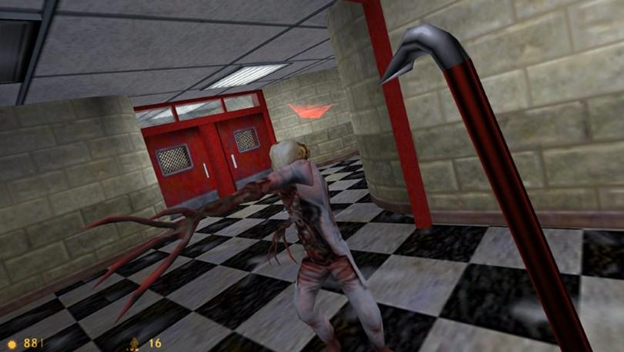
Zombies, well, want to kill you
From the seeds of HALF-LIFE, a beautiful lineage was born. The expansion packs OPPOSING FORCE and BLUE SHIFT follow concurrent scenarios within the compound: hunting Freeman as one of the invading marines and escaping as security guard, respectively. Not only did each add a host of improvements to the base game, they also helped cement the reputation of fledgling developer Gearbox Software as well. Co-founded by Randy Pitchford, Gearbox Software is now one of the most popular developers out there. The extremely-flexible gldsrc engine that HALF-LIFE ran on was a modder’s paradise, and it was through such tinkering that HALF-LIFE got its real multiplayer offerings: TEAM FORTRESS CLASSIC, DAY OF DEFEAT, and of course, the ever-relevant COUNTER-STRIKE.
By the time HALF-LIFE 2 was prepping for launch in 2004, Valve had a cult following and a half dozen titles beneath their umbrella, despite having only developed a single game. This success was multiplied after the sequel came out, and the popularity of Valve’s family of games played no small part in ensuring the rise of their online distribution platform, Steam. The rest, they say, is history.
It wasn’t just Valve that benefited from HALF-LIFE’s legacy. Every time a Grunt panicked and ran from you in HALO, every time your commander pulled you aside to give you an order in CALL OF DUTY, every time you learned about Rapture’s backstory through one of BIOSHOCK’s audio logs-that was all thanks to the trail blazed by HALF-LIFE. We may never live to see a HALF-LIFE 3, but with such so many stellar entries built around the tradition of the original masterpiece, I don’t really think we need an additional comment.

